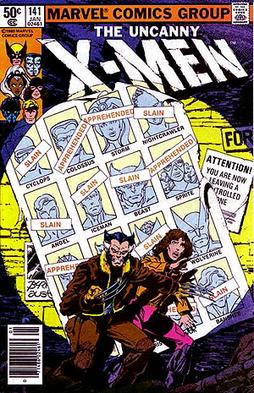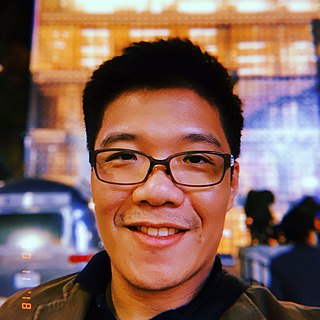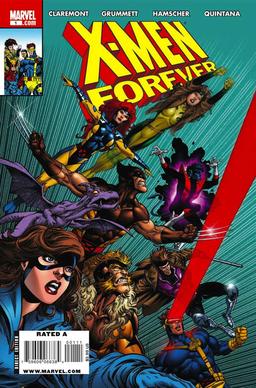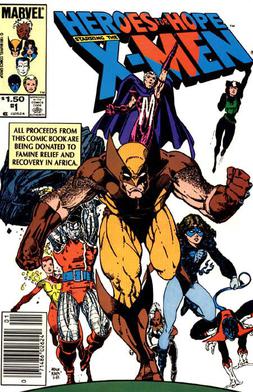
Christopher S. Claremont is an American comic book writer and novelist, known for his 16-year stint on Uncanny X-Men from 1975 to 1991, far longer than that of any other writer, during which he is credited with developing strong female characters as well as introducing complex literary themes into superhero narratives, turning the once underachieving comic into one of Marvel's most popular series.

X-Men, also known as X-Men: The Animated Series, is an animated superhero television series which debuted on October 31, 1992, in the United States on the Fox Kids Network. X-Men was Marvel Comics' second attempt at an animated X-Men TV series after the pilot, X-Men: Pryde of the X-Men, was not picked up.

Sabretooth is a character appearing in American comic books published by Marvel Comics, most commonly in association with the X-Men, in particular as an enemy of the mutant Wolverine. Created by writer Chris Claremont and artist John Byrne, the character made his first appearance in Iron Fist #14. The original portrayal of Sabretooth was that of a non-powered serial killer, but was later written as a mutant possessing bestial superhuman abilities, most notably a rapid healing factor, razor-sharp fangs and claws, and superhuman senses. He is a vicious assassin, who was responsible for numerous deaths throughout history, both as a paid mercenary and for his personal pleasure. Accounts on how his enmity with Wolverine originated differs depending on different writers. One of the most common accounts is that Wolverine and Sabretooth were both participants of the Cold War supersoldier program Weapon X, and that Sabretooth saw Wolverine as competition and therefore antagonized him. While Wolverine is depicted as suppressing his more savage qualities, Sabretooth does the opposite and embraces them, until the events of the 2014 storyline "AXIS".
William Douglas Oakley was a letterer for numerous comic books from Marvel, DC, and other companies. His most prominent works include the first two volumes of Alan Moore and Kevin O'Neill's The League of Extraordinary Gentlemen and Batman: Gotham Knights #1-11, #15-37.
A letterer is a member of a team of comic book creators responsible for drawing the comic book's text. The letterer's use of typefaces, calligraphy, letter size, and layout all contribute to the impact of the comic. The letterer crafts the comic's "display lettering": the story title lettering and other special captions and credits that usually appear on a story's first page. The letterer also writes the letters in the word balloons and draws in sound effects. Many letterers also design logos for the comic book company's various titles.

Todd Klein is an American comic book letterer, logo designer, and occasional writer, primarily for DC Comics.

"Days of Future Past" is a storyline in the Marvel Comics comic book The Uncanny X-Men issues #141–142, published in 1981. It deals with a dystopian future in which mutants are incarcerated in internment camps. An adult Kate Pryde transfers her mind into her younger self, the present-day Kitty Pryde, who brings the X-Men to prevent a fatal moment in history that triggers anti-mutant hysteria.

Kevin MacTaggert, best known as Proteus and also called Mutant X, is a character appearing in American comic books published by Marvel Comics. The character is commonly associated with the X-Men.

Wolverine is a number of Marvel Comics comic book series starring the X-Men member Wolverine. As of April 2013, 323 issues and 11 annuals have been published. It is the original flagship title created for the character.

X-Men: Legacy is a comic book series published by Marvel Comics featuring the mutant superhero team the X-Men.

Leinil Francis Yu is a Filipino comic book artist, who began working for the American market through Wildstorm Productions.

Chris Eliopoulos is an American cartoonist and letterer of comic books.
In American comic books published by Marvel Comics, a mutant is a human being that possesses a genetic trait called the X-gene. It causes the mutant to develop superhuman powers that manifest at puberty. Human mutants are sometimes referred to as a human subspecies Homo sapiens superior or simply Homo superior. Mutants are the evolutionary progeny of Homo sapiens, and are generally assumed to be the next stage in human evolution. The accuracy of this is the subject of much debate in the Marvel Universe.

John Workman is an American editor, writer, artist, designer, colorist and letterer in the comic book industry. He is known for his frequent partnerships with writer/artist Walter Simonson and also for lettering the entire run of Grant Morrison/Rachel Pollack's Doom Patrol.

Star Trek/X-Men is a one-shot comic book crossover, written by Scott Lobdell and published in 1996.

The Uncanny X-Men and The New Teen Titans is a crossover comic book published by Marvel Comics which features two teams of superheroes, Marvel's the X-Men and DC Comics' the New Teen Titans.
James R. Novak was a comic book creator, primarily working as a letterer for Marvel Comics, where he worked on almost every one of their ongoing series, and contributed to the development of the iconic Star Wars logo. He did occasional work as a writer, penciler, and colorist, and also worked at publishers including Dark Horse, Boom! Studios, Image, Dynamite, and IDW.
Ken Lopez is a letterer and logo designer for the comic book industry. A pioneer of computer lettering, Lopez designed the fonts for DC Comics's in-house lettering unit, and is currently DC's art director for lettering and its cover editor.

X-Men Forever is the name of three comic book series published by Marvel Comics featuring the mutant superhero group the X-Men. The first is a 2001 miniseries, unrelated to the others. The second and third are the work of writer Chris Claremont.

Heroes for Hope: Starring the X-Men is a 1985 Marvel comic book designed to raise awareness about hunger in Africa. Proceeds from the comic went to the American Friends Service Committee, to assist in their work on behalf of African famine relief and recovery. Published in the form of a "comic jam" or exquisite corpse, the book featured an all-star lineup of comics creators as well as a few notable authors from outside the comic book industry, such as Stephen King, George R. R. Martin, and Edward Bryant. It also saw a rare Alan Moore Marvel Comics credit outside his early Marvel UK work.















